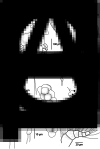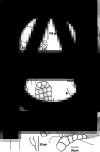Species of Ergasilus von Nordmann, 1832 (Copepoda: Ergasilidae) from cichlid fishes in Lake Tanganyika
- PMID: 36938816
- PMCID: PMC10260305
- DOI: 10.1017/S0031182023000239
Species of Ergasilus von Nordmann, 1832 (Copepoda: Ergasilidae) from cichlid fishes in Lake Tanganyika
Abstract
Ergasilus (von Nordmann, 1832) (Ergasilidae) is a species-rich group of parasitic copepods with a wide distribution in freshwater, marine and brackish environments. Up to now, 9 species of Ergasilus are known from cichlid fishes in Africa. In this study, 5 species, including 3 new, were collected from the gills of 12 cichlid species (11 genera: Bathybates, Ctenochromis, Eretmodus, Gnathochromis, Lamprologus, Neolamprologus, Ophthalmotilapia, Perissodus, Simochromis, Spathodus and Tanganicodus) of the northeastern shore of Lake Tanganyika in Burundi, namely E. macrodactylus (Sars, 1909), E. megacheir (Sars, 1909), E. caparti n. sp., E. parasarsi n. sp. and E. parvus n. sp. All species found were identified and described on the basis of adult female specimens using an integrative taxonomy approach mixing morphological characterization and molecular analyses of 2 ribosomal DNA markers (partial 18S and 28S rDNA sequences). An identification key for Ergasilus species from Lake Tanganyika is included. This study provides the first molecular data for Ergasilus species in Africa. The phylogenetic analyses suggest that the Ergasilus species parasitizing Lake Tanganyikan cichlids form a well-supported clade within the Ergasilidae. However, their phylogenetic relationships with other congeners still remain unclear due to a lack of molecular data for this diverse genus.
Keywords: Africa; Tanganyika; cichlids; diversity; parasitic crustaceans.
Conflict of interest statement
None.
Figures













References
-
- Avenant-Oldewage A and Oldewage W (1993) Checklist of the parasitic Copepoda (Crustacea) of African fishes. Muséé Royal de l'Afrique Centrale Tervuren Belgique Documentation Zoologique 23, 1–28.
-
- Boxshall GA and Defaye D (2007) Global diversity of copepods (Crustacea: Copepoda) in freshwater. In Balian EV, Lévêque C, Segers H and Martens K (eds), Freshwater Animal Diversity Assessment. Dordrecht: Springer Netherlands, pp. 195–207. doi: 10.1007/978-1-4020-8259-7_21 - DOI
-
- Boxshall GA and Halsey SH (2004) An Introduction to Copepod Diversity. London: Ray Society.
-
- Boxshall GA and Montú MA (1997) Copepods parasitic on Brazilian coastal fishes: a handbook. Nauplius 5, 1–225.
Publication types
MeSH terms
LinkOut - more resources
Full Text Sources
Miscellaneous

